What is connected car data?
Before we define connected car data, let’s make sure we accurately understand what a connected car is.
A connected car is an Internet of Things (IoT) vehicle that can communicate with external systems to provide information about its own operations and the outside world using built-in sensors.
You may not realize it, but the chances are high that you’re driving a connected car, as most modern vehicles are manufactured with various built-in sensors. Accordingly, connected car data represents all of the information the vehicle is registering from its activity on the road. The diversity of information depends on the type of car you own and how many sensors are built into the vehicle. Connected car data ranges from the more obvious data attribute sources, such as location, speed, and engine status, to more surprising pieces of information, such as battery voltage, tire status, number of passengers, and much more.
The first connected car was made in 1996 by General Motors and Motorola Automotive to improve safety by enabling a telematics system that alerted emergency responders when an airbag was deployed. Since then, the industry has come a long way, and technology has gotten significantly more complex. Even though safety will always remain a primary motivation, today, the applications for connected car data are varied and reach beyond the automotive landscape.
Why is connected car data useful?
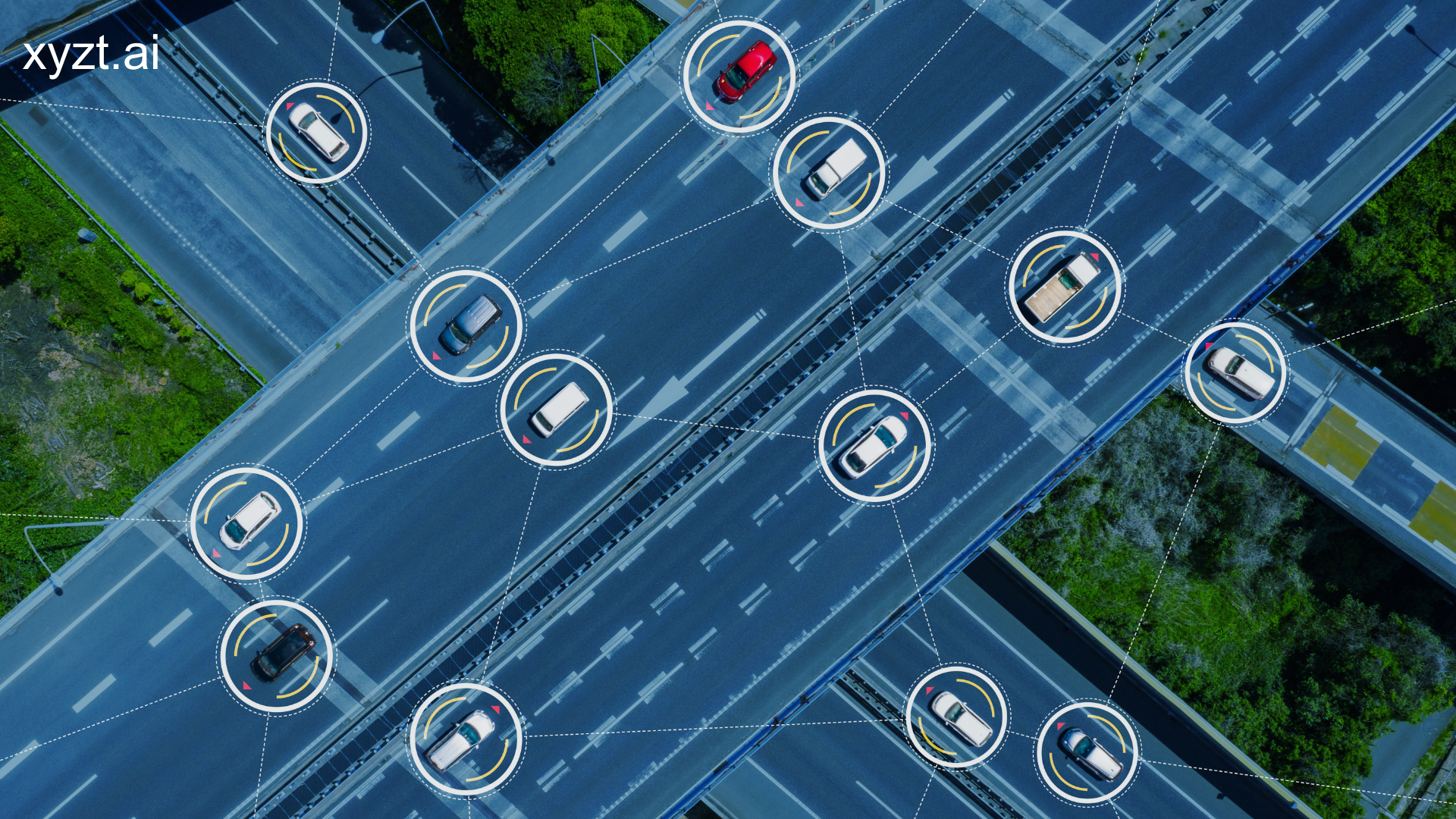
As vehicles become more and more connected, data aggregation accelerates with each passing day. This implies that, on the one hand, more cars will contribute to data sharing. On the other hand, as the connected car industry grows and innovates, more complex sensors are built and integrated to capture new information. Therefore, the real value lies behind the macro picture: monitoring and analyzing connected car activity at scale.
Data from one vehicle journey will not tell us much, but connected car data from millions of vehicles provides the world with detailed information about mobility flow and driving experience necessary to understand how we live, work, and travel.
A smart city of the future
Connected car data provides an exciting opportunity for mobility companies and smart city authorities to get a look “under the hood” and ascertain how they can optimize their products and mobility infrastructure to provide a more efficient, safe, and sustainable product or service.
Connected car data enables smart city authorities to accelerate towards advanced mobility by understanding how people move through the city. To this end, it’s not only connected cars that provide a source of information, but, today, also new mobility devices, such as steps and bicycles, and foot traffic captured from mobile device data help paint a complete picture of macro mobility. However, in this article, let’s focus on connected car data.
How to become a traffic data rockstar? Learn more
According to a report from the UN, today, more than 55% of the world population is estimated to live in urban areas, with an estimation of 68% by 2050. Small cities are getting big, and big cities are getting mega. This trend highlights the need for data intelligence and smart solutions to enable the mobility of tomorrow.
Where do most vehicles come from before entering the city? How do they move from point A to B? Where and when does traffic congestion occur, and how can we optimize our infrastructure to alleviate this? Do we spot a pattern between hard-braking events and potholes? What areas indicate high speeds, and what can be done to minimize traffic accidents? Can we reduce noise pollution in residential areas?
The list goes on, but questions like this exemplify how smart mobility investments can generate a deep understanding to make informed data-driven decisions for a safer, happier, and greener city.
Applications for connected car data

Smart cities are merely the tip of the iceberg. The advancement of mobility technology and the versatility of connected car data creates many applications for sectors in and outside the automotive industry to leverage this valuable mobility source and derive value. Listed below are some examples:
- Insurance: Connected car data provides insurance companies the opportunity to create enhanced insurance product tailoring, assess risk profiles, track the implications of risk and protection, and define insurance rates.
“(Re)insurers currently lack data and intelligence on mobility behavior even for traditional vehicles, including simple details, such as who is driving the vehicles they insure.”, mentions Swiss Re, a leading insurance company, in an article. - Fleet management & logistics: Optimize your fleet operations, reduce costs, and enhance driver safety. Connected car data allows you to monitor and analyze your fleet operations in near real-time for situational awareness. Analyze historical data to spot inefficient or dangerous traffic patterns, plan optimal routes to save time and fuel consumption.
- Retail & media/entertainment agencies: Retail outlets can benefit from connected car data to identify optimal business locations. For example, a hotel might analyze how cars are moving from the airport to identify the most popular routes that still provide near connectivity to other accommodations. Likewise, advertising agencies can increase their reach by identifying hotspots at certain times of the day.
How to analyze connected car data for traffic analysis
To perform efficient and accurate traffic and mobility analysis, you need two primary ingredients to discover insights and solutions. Firstly, just as with any new project, your foundation needs to be solid. In other words, you need high-quality data that is clean and secure. Secondly, you need a robust and scalable tool to visualize and interactively analyze the data to understand what you’re looking at and discover what you’re looking for. Connected car data is the door, while an interactive analytical tool is the key to unlocking the future of mobility.
Where to find connected car data
As a result of the growth of the big data industry, Data-as-a-Service (DaaS) companies have gained in popularity in recent years. They specialize in collecting, cleaning, and sharing big data for other companies to implement and gain a competitive edge. In the case of traffic mobility, otonomo and INRIX are two companies at the forefront of providing innovative and global coverage of connected car data.
How to use connected car data for traffic analysis
The second piece of the puzzle is a powerful analytical tool. Extracting insights from connected car data can be challenging because traditional location intelligence tools don’t provide the necessary interactivity and scalability when dealing with vast amounts of data.
xyzt.ai is a self-service visual analytics tool for big location data that enables you to extract insights and solutions from day one. The platform scales to billions of records and provides various solution-oriented features to intuitively explore the data, visualize statistics, and analyze trends and changes over time. Using xyzt.ai, you don’t have to be a data scientist to understand and learn from connected car data.
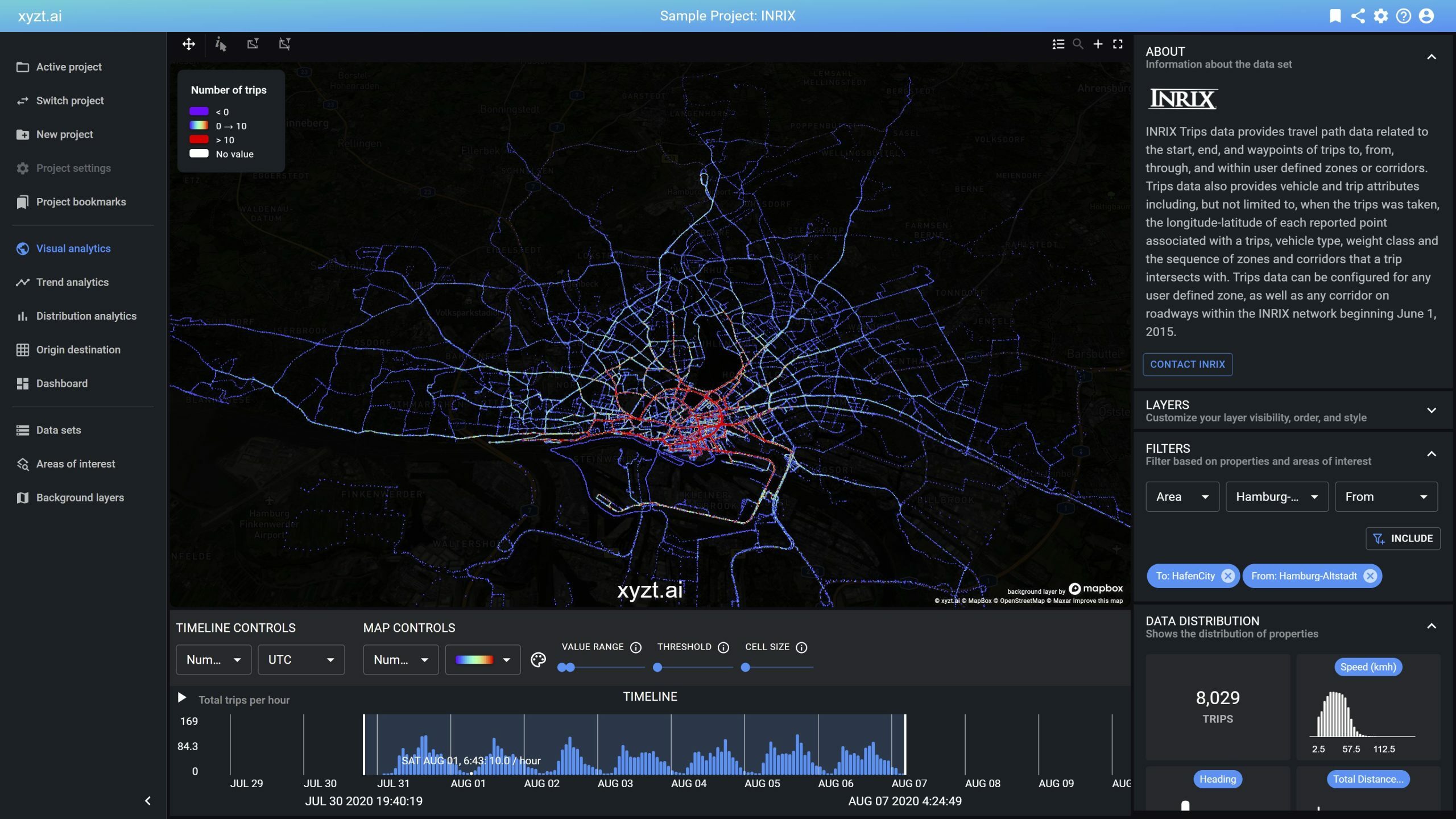
In the image above, you can see the Visual Analytics page of the xyzt.ai platform displaying seven days of connected car data in the city of Hamburg, Germany, with data provided by INRIX. The visual analytics page offers three different, but interconnected, ways to view the data in an easy, clear, and interactive way:
- Heatmap: This screen visualizes total coverage of the data set. It is able to process billions of records with a sub-second update rate while maintaining interactivity. For example, by zooming in and out on the map.
- Timeline: Using this view, found at the bottom of the screen, you are able to filter and analyze the data set within a certain time range. For example, you can define the number of records or trips or whatever value you have indicated in the map control panel.
- Attributes: The third view, on the right side of the screen, shows the distribution of different properties found in the dataset that allows a more accurate analysis. For example, number of trips, speed, heading, and total distance.
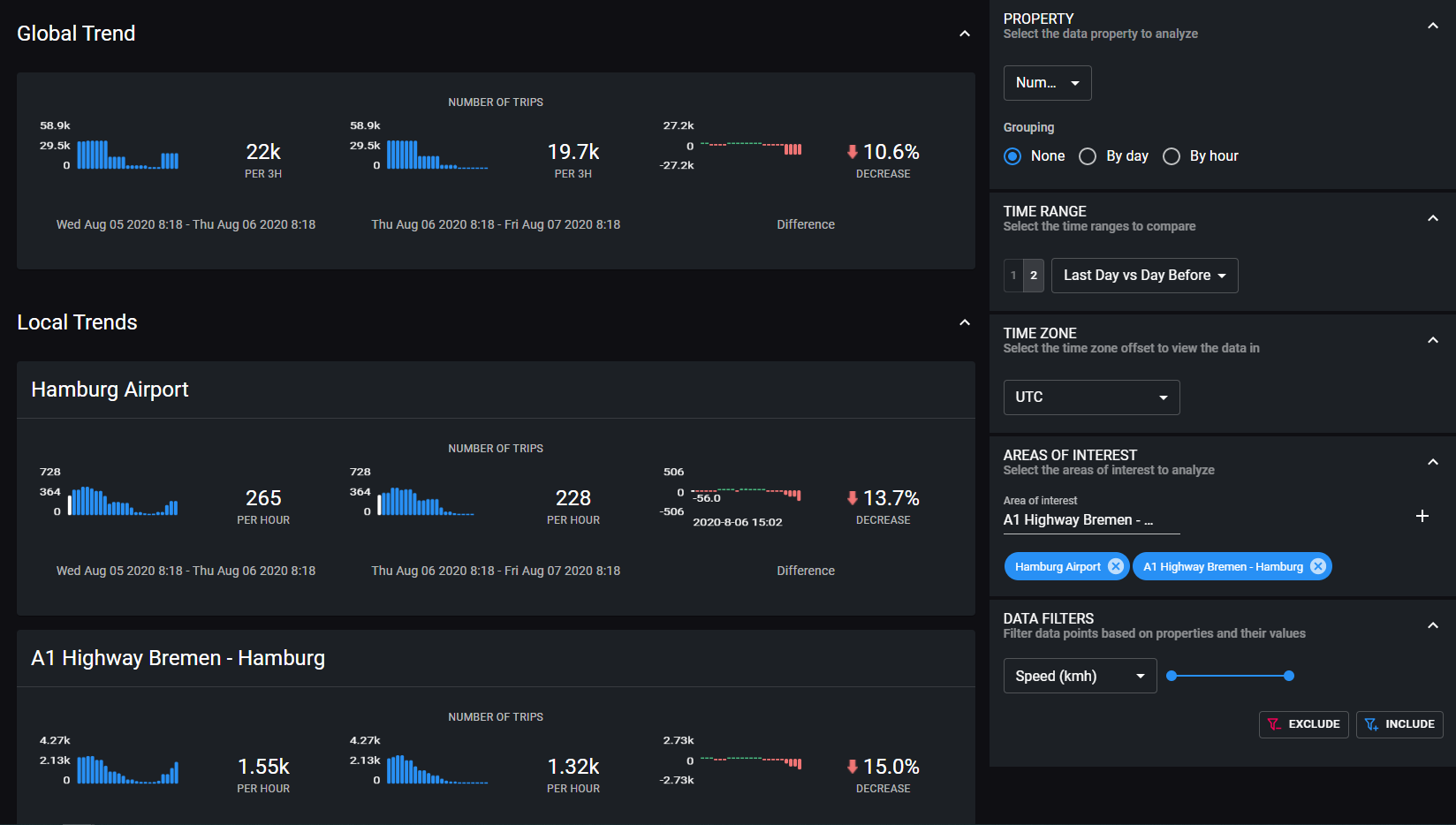
The second dedicated page of the xyzt.ai platform is the Trend Analytics feature. This tool allows you to analyze local and global trends over time. On the visual heatmap, you can draw areas of interest, which can be added to the Trend Analytics page to monitor the changes over a chosen time range. In the image above, you can see we have selected ‘Hamburg airport‘ and the ‘A1 Highway (from Bremen to Hamburg)‘ as our areas of interest.
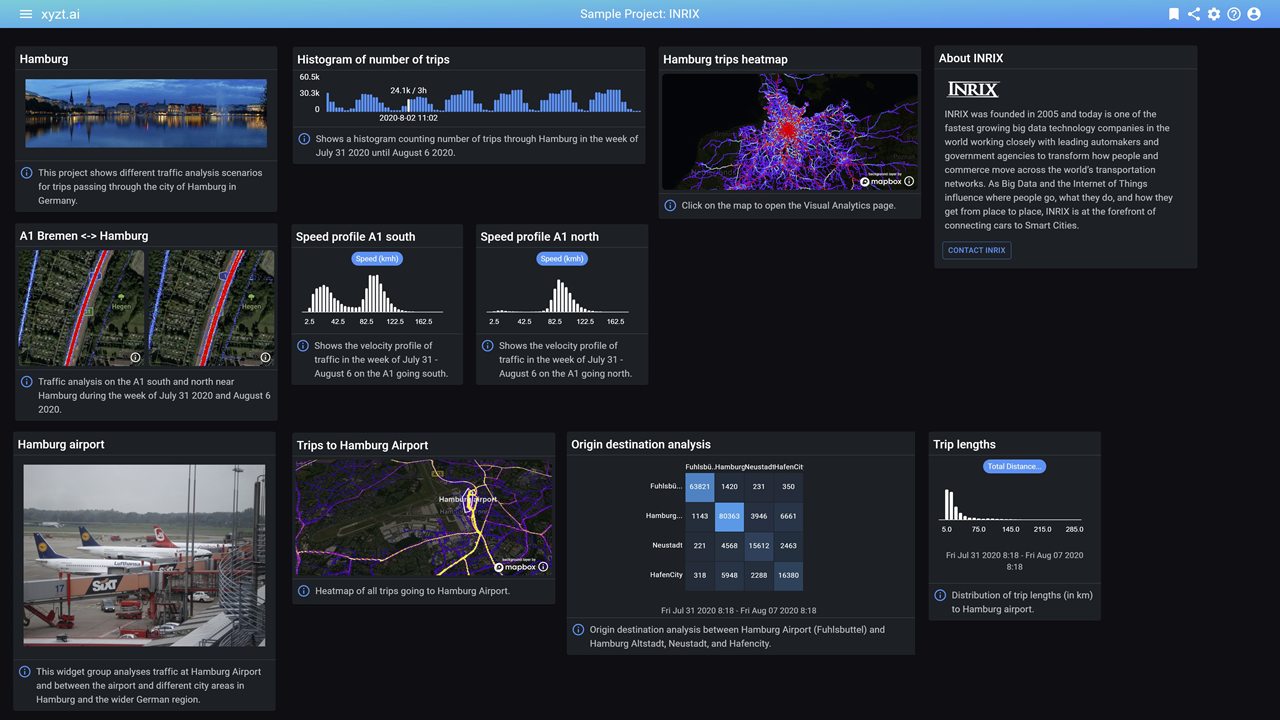
Another interesting feature xyzt.ai offers, is the possibility to create and share dashboards. Data has a lot of stories to tell. Using the dashboard, you can save important elements of your analysis and communicate a story by including widgets of interactive maps, timelines, dedicated pages, bar charts, and more. Since the latest xyzt.ai product release, users can now share the dashboard using a special link with their customers, stakeholders, colleagues, or whoever they like. The shared link also works for the following pages on the platform: Visual Analytics, Trend Analytics, Origin Destination Analytics, and Distribution Analytics.
Useful terminology
| Connected car data | The general term used to describe all the data attribute information captured by all the various sensors built into connected cars. | |
| Floating car data | A part of connected car data that provides information about the geographical location of a car in space and time. | |
| Events data | A part of connected car data that provides information about vehicle breakdowns and offers explanations for weather conditions and other road hazards. | |
| Trips data | A part of connected car data that provides information about the travel path of connected cars, and in some cases, also includes information about data attributes, like vehicle type and weight class. |
Conclusion
Cars are becoming more and more data-generating capsules on wheels. An article by the Belgian newspaper De Tijd expanded on the decision of the Flemish government to mandate that all newly registered cars must be electric from 2029. With topics like autonomous driving, connectivity, electrification, and shared and new mobility on the rise, smart city authorities and mobility companies can no longer ignore this trend. They should consider how they can fully leverage digitalization to their advantage. Two elements are necessary to capture the value and enable profitable growth: quality data and a powerful analytical tool. The automotive industry is changing faster than ever, providing unique opportunities for those willing to differentiate themselves and embrace innovation.
